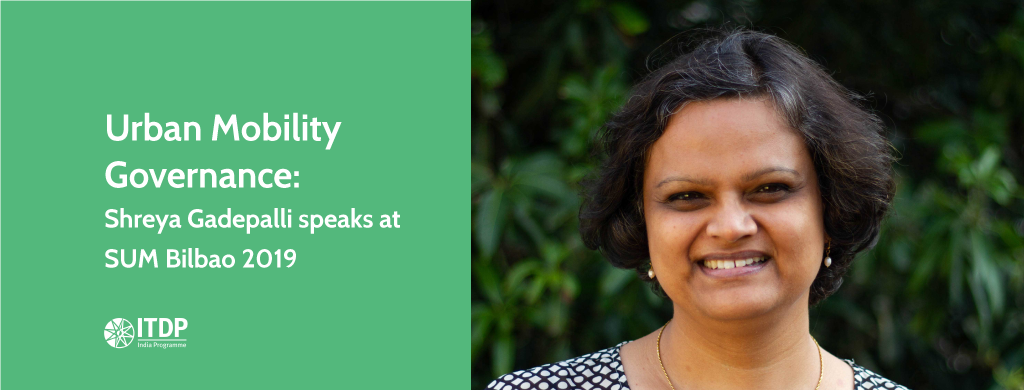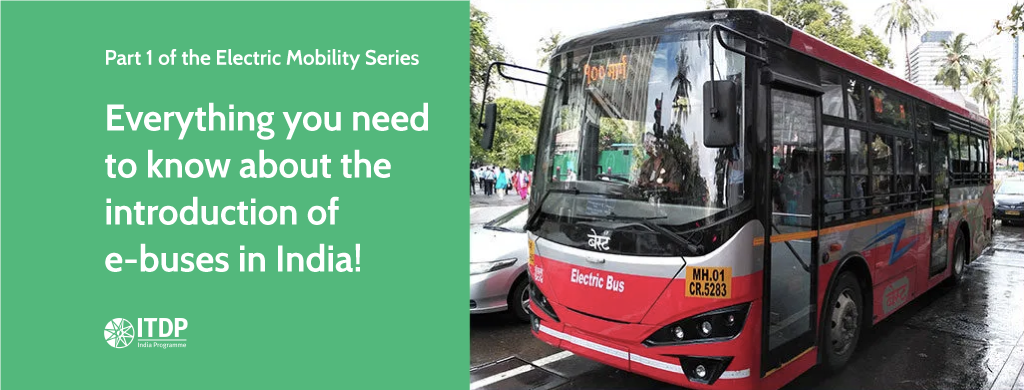Last month, Uber was reported to be considering the introduction of electric scooters, as part of their shared mobility services, in India. Part of an emerging global trend in the search for environmentally viable last-mile connectivity solutions, micro-mobility devices such as e-scooters have attracted over half a billion dollars in investment from Alphabet, Ford, Uber, and others in the last year. As a result, their arrival in India might be inevitable, and our cities could benefit from by creating a favourable regulatory environment.
How so? Electric micro-mobility devices have the potential to address two major challenges faced by our cities: enabling the mobility of persons with disabilities (PWDs) and reducing dependence on carbon-intensive modes of private transport, including two-wheelers.

First, the various forms they are available in makes electric micro-mobility devices suitable for a wide range of applications, including aiding the mobility of the elderly or PWDs. Further, their lower upfront and maintenance costs could help reduce private vehicle usage.
Reducing India’s dependence on two-wheelers
A recent study by IIT-Delhi found up to 70 percent of all work-related trips in Indian cities do not exceed five kilometers in length. These are distances typically covered sooner and more conveniently on two-wheelers than by using public transport in most Indian cities, perhaps explaining why 79 percent of all vehicles sold in the country in 2018 were two-wheelers.
Arguably, however, the usage of as many two-wheelers every day can prove detrimental to our cities, as they clog our roads and pollute the air we breathe. These are issues we have been unable to address despite years of awareness, as solutions have ranged from the impractical to the unviable. For instance, most State Transport Undertakings (STUs) in the country lack the wherewithal to expand public bus service capacity to meet the ever-growing demand. Even if they did, quality of bus service remains a concern. Then there is road rationing, which governments, perhaps mindful of political ramifications, do not want to subject two-wheelers to, as observed in Delhi during the Odd-Even trials.
In micro-mobility, however, our cities might finally have the means to reduce two-wheeler usage, owing to lower costs of ownership and usage. E-scooters in the US now cost between $100 and $300. Assuming similar prices in India, and even before subsidies, they could cost at least $150 (or about ₹10,000) less than most entry-level two-wheelers in India. Further, with shared usage models for micro-mobility, akin to public bicycle sharing, the residents of a city could be spared the costs of ownership, thus making e-scooters an attractive proposition compared to private two-wheelers.

Being powered by electric motors, micro-mobility devices also have an advantage over two-wheelers in terms of tailpipe emissions, any potential reduction of which could significantly improve air quality in most of our polluted cities.
Considering these factors, a favourable regulatory environment in India could make micro-mobility devices the preferred mode of travel in cities for rides up to 5 kilometres, the distance they are being used to cover in most American cities. In addition to the potential of reducing two-wheelers usage, this could also reduce dependence on shared cab rides over short distances. The likely threat to shared taxi firms perhaps explains why they are actively investing in e-scooter startups. The same threat – of losing ridership to e-scooters – unfortunately applies to state-run public bus services as well and herein lies the challenge in framing a favourable regulatory environment for micro-mobility devices meant for the general public in India.

Aiding the Mobility of PWDs
Micro-mobility devices for persons with disabilities and the elderly, however, might not face the same regulatory hurdles. In cities mostly hostile to their daily commute, chair-type micro-mobility devices, capable of being operated on the roads as well as indoors, could make lives easier for persons with special needs.
Research has found these devices, already in use in Japan and some other countries, to be essential in providing an active life to those with declining abilities. This makes them essential in a country where most public transportation modes are not suitable for use by people with special needs. Consider buses, for example. The Department of Empowerment of Persons With Disabilities, in its 2017-18 Annual Report, found only 9.1 percent of all buses in the country were “provided with accessibility features”. It should be noted that ‘accessibility features’ here may not necessarily mean a ramp or wheelchair harness, and could instead indicate the presence of audio announcements and other amenities accessible only upon boarding the vehicle.

Trains fare no better: most platforms are accessible only through a footover bridge. Then, there’s a gap between the train and the platform in almost every Indian city, with the latter often at a much lower level.
Article 41 of the Rights of Persons with Disabilities Act, 2016 guarantees government support to aid the mobility of PWDs. But with accessibility improvements to buses and suburban trains being hard to implement, and with metro rail access being limited to certain stretches of a city, micro-mobility devices are perhaps the easiest means of aiding the movement of the elderly and PWDs.
Regulating Micro-Mobility
In micro-mobility, India has a rare opportunity to address long unresolved, critical issues of public interest. India could also benefit from the lessons learned by other cities where micro-mobility solutions have been implemented. For instance, some cities in the United States have been affected by haphazard parking of e-scooters on footpaths and in public places. Some others have been wary of the road safety challenges posed by these vehicles.
The lessons learned by these cities, fortunately for India, has been documented in the form of reports, such as those published as part of the San Francisco Powered Scooter Share Pilot Program. These publications could inform regulatory decision-making in India to ensure micro-mobility complements existing public transport capacity, of which there remains a perennial supply deficit, and enables the mobility of PWDs and the elderly, a concern long unaddressed.
Written by Varun Shridhar
Edited by Kashmira Dubash
Cover photo credits: Ian Sane, Flickr
Read more on these series –
Part one: Everything you need to know about the introduction of e-buses in India!
Part two: E-mobility: the game-changer for Informal Public Transport in India














